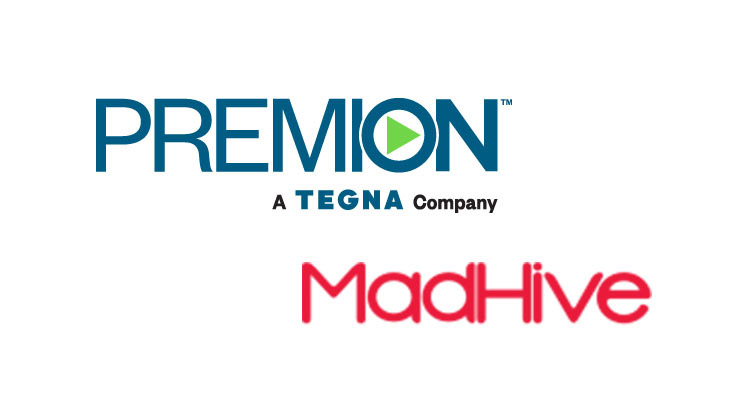
by Will Felcon | Oct 31, 2017
Blockchain offers tremendous promise to fix the growing ad fraud problem, but it will take greater collaboration among industry players to drive its progress. According to a CNBC report, ad fraud will cost brands $16.4 billion globally this year, and nearly 20 percent of total digital ad spend was wasted in 2016.
As a technologist, I keep a keen eye on how our industry can harness the power of blockchain. As such, we at TEGNA along with MadHive and IBM are founding members of AdLedger, the adtech industry’s blockchain consortium. Our consortium meets regularly to drive our blockchain agenda forward to bring increased transparency and data security to the ad tech supply chain.
Working with MadHive, we are building out a path for blockchain technology to help reduce fraud and costs in the advertising supply chain, in areas such as; alleviating manual reporting and reconciliation and improving reporting accuracy across ad serving technologies. By taking a leadership role in applying blockchain technology to advertising, we can bring greater trust and transparency to our advertisers and content partners. For Premion, we see the potential to create a decentralized network amongst our OTT content partners where both impression data and audience data can be shared in an anonymized, yet secure network.
Read the full article by Will Felcon on LinkedIn

by Jim Wilson | Aug 7, 2017
By any measure, media transparency remains the hot-button issue for advertisers today. Beyond voicing their concerns, we’ve seen two of the world’s largest advertisers pull back their digital ad spending. Both P&G and Unilever are putting their money where their mouths are, with P&G cutting spending by 41% year over year and Unilever doing the same by a whopping 59%.
At this year’s Cannes Lions, media industry leaders convened to address the ways they are working to improve transparency, and we saw Ebiquity launch its Media Transparency Score at the event in the hopes of becoming one of the standard benchmarks for the industry.
Click through to Jim’s article in Forbes to read more.

by PREMION | Jun 19, 2017
Premion announced its partnership today with MadHive, a blockchain-based ad tech solutions provider. The partnership is in direct response to the growing fragmentation and lack of scalability in OTT advertising as well as the lack of transparency in the industry as a whole. By harnessing MadHive’s blockchain-powered solutions, Premion seeks to bring increased transparency and accountability to the opaque ad tech supply chain.
You can read more about it here: Digital TV News Net

by Jim Wilson | May 2, 2017
To drive the growth engine in today’s fast-changing world, CMOs must keep pace of the rapidly evolving channels and technologies to engage audiences that are multiplying at a lightning pace across platforms and devices. Forward-looking CMOs are paying greater attention to the rise of over-the-top (OTT) audiences, which has emerged as the fastest-growing segment of video advertising views.
TV viewing has entered its sixth evolution with OTT
In our ‘place-shifting’ era, consumers pick a device, connect to the Internet and consume OTT content anywhere and at anytime they choose. According to The Diffusion Group (TDG), 78 percent of households have OTT subscriptions and they’re spending more time watching OTT than ever before.
NBC’s latest announcement to expand OTT with local affiliates further validates the ‘mainstreaming’ of OTT. Another study by Level 3 suggests that within the next five years, viewership hours of live-linear streaming OTT video could surpass those of traditional broadcast TV.
According to Nielsen, more than 60 percent of OTT viewers prefer to watch long-form and live-streaming content on a big screen. And it’s not just millennials. More than 60 percent of OTT viewers are age 25 to 54 years old – that’s more than 90 million viewers (source: eMarketer).
While consumers are clearly spending more time watching OTT, advertising on OTT is still a new, emerging frontier. So how can marketers keep up and make sense of it all?
OTT offers untapped potential but it’s highly fragmented
OTT blends the attribution of TV advertising with digital media’s precision, but it’s still the Wild West. OTT advertising is highly fragmented; some OTT ad inventory is sold as part of big upfront TV packages alongside traditional cable and broadcast ad time. Some inventory is sold by OTT service providers and platforms like Sling or Roku. And in some cases, these ads are purchased through ad tech middlemen, or programmatically.
So what does it take to shift more ad dollars to OTT advertising? It begins with helping advertisers and marketers navigate the highly fragmented space through a simplified buying process for OTT.
Our roadmap for effective, simplified OTT media buying
Don’t limit your reach – To effectively reach the rapidly growing local and regional audiences that are no longer viewing traditional linear TV requires working with many OTT providers. You can get rid of the fragmentation headache by picking a partner that will streamline your media buy across multiple OTT providers and platforms in one seamless transaction.
Reach premium audiences at scale – Reaching premium audiences is the best approach for brand safety and we should make it easy for advertisers to buy premium media at scale. Buying ad inventory on premium content on OTT platforms such as Premion addresses brand safety, viewability and fraud. You want to ensure that your ads run on trusted networks with authenticated viewers.
Expect transparency – Take control of your brand and work with partners who can provide you with the confidence to know exactly where your ads will appear. While some providers tout low CPMs, they are adding a significant amount of short-form advertising products into the mix, including user-generated content, to keep costs down. If you want brand-safe long-form premium content, be wary and ask questions.
These are exciting times for OTT — both for consumers and marketers. Consumers have much more TV viewing choice and control. And marketers that leverage smart OTT buying strategies in their media plans will reach more engaged and relevant audiences.
—Jim Wilson, President, Premion

by Jim Wilson | Apr 4, 2017
The mass exodus of YouTube by advertisers could cost Google as much as $750 million in revenue, according to analyst estimates. And with global digital ad spending reaching $195 billion last year (source: eMarketer), there is simply too much money and risk involved to gamble with user-generated content (UGC) or questionable content.
Advertisers should be focusing on brand-safe media, especially when it comes to video. And they should be paying attention to the rise of over-the-top (OTT), which is emerging as the fastest-growing segment of video advertising views. According to The Diffusion Group, OTT ad revenues are forecasted to rise to $31.5 billion by 2018 from $8.5 billion in 2015.
The YouTube controversy also highlights the challenges with programmatic advertising. While automated media buying offers tremendous efficiencies, ad platforms need to invest in more human oversight to police content more thoroughly to avoid the costly mistake of having ads end up appearing next to offensive content that’s detrimental to an advertiser’s brand. Given the size and scope of advertiser spending on YouTube, it’s unacceptable to blame the volume of video uploads for not having adequate review policies in place.
Advertisers deserve stricter assurances on where their ads will appear as brand safety is of utmost importance in maintaining brand integrity. As advertisers evaluate the effectiveness and ROI of their media buying in brand-safe environments, here’s my take on the top three considerations:
Focus on premium long-form OTT content – Reaching premium audiences is the best approach for brand safety and we should make it easy for advertisers to buy premium media at scale. Buying ad inventory on premium content on over-the-top (OTT) platforms addresses brand safety, viewability and fraud. You want to ensure that your ads run on trusted networks with authenticated viewers.
Demand greater transparency – Advertisers expect to have control of their brand and they need to know exactly where their ads appear. While some providers tout low CPMs, they are adding a significant amount of short-form, non-branded advertising products into the mix, including user-generated content, to keep costs down. If you want brand-safe long-form premium content, be wary and ask questions.
Enhance consumer experience with fewer, more relevant ads – Too often, consumers are bombarded with irrelevant (and repetitive) ads on their various apps and devices. The OTT and on-demand environment offers advertisers a far more targeted audience, where viewers see fewer, more relevant ads. To address repetitiveness, we need to strike the right balance between frequency capping not just on shows but on providers and networks. Furthermore, the emergence of precision audience targeting in OTT will further yield greater efficiencies in reach and relevancy.
The future of advertising is about reaching premium audiences. In our ever-increasing ‘place-shifting’ era, where consumers pick a device, connect to the Internet and consume OTT content, advertisers need trusted partners who are committed to transparency and deliver greater ad relevancy so that consumers will enjoy engaging in brand experiences.
—Jim Wilson, President, Premion





